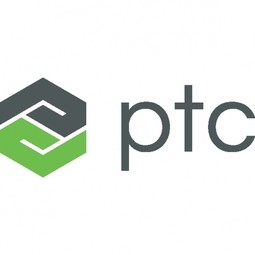With the release of the SYMPHONY system, Ventana introduced CareGiver, a remote service capability developed with PTC Axeda software. CareGiver enables 24/7 real-time instrument monitoring, over-the-shoulder remote customer support, and potential for future enhancement and expansion. “With H&E staining, instrument uptime is critical and any issues must be quickly and accurately diagnosed and resolved,” says Flaten. “CareGiver gives SYMPHONY customers the peace of mind that their system will operate as promised.” “Before choosing our remote service solution, I obtained feedback by speaking with several customers and healthcare facilities using PTC Axeda software,” notes Flaten. “Without exception, the feedback was extremely positive. It was clear that PTC Axeda software is the leader for remote service and support.” During the technical evaluation, Dameron and his team were impressed with the product’s features and capabilities and were confident that they could integrate the technology without delaying the SYMPHONY launch. “The SYMPHONY architecture was open enough to incorporate PTC Axeda software within only a couple of hours to get a demo up and running,” says Dameron. “The technical hurdles from the application instrument side were minimal. Most importantly, we were able to maintain complete system stability.” With CareGiver, Ventana remotely monitors the entire SYMPHONY system, including several hundred sensors, various inputs and outputs, and the Microsoft® Windows® PC that serves as the system’s host. A major benefit of PTC Axeda software is that it enables Ventana to deliver remote software updates, helping to maintain system uptime and minimize disruptions to the customers’ workflow. Additionally, the software provides secure “over-theshoulder” operator assistance, minimizing time spent troubleshooting and reducing the need for onsite service calls. “We rely heavily on the data that we receive from our instruments. If an instrument hiccups for any reason at all, we know about it immediately,” explains Dameron. “With that regular heartbeat, we also know volume and usage patterns, like how much the customer is using the instrument. We can adapt any of our findings in realtime to provide the right level of service and support for our customer base.” Ventana trains its SYMPHONY sales force on the full capabilities of CareGiver by using a presentation tailored for lab personnel and IT departments. To promote the remote service program both internally and externally, Flaten’s team displays a large flat panel monitor in the customer service center, which continually displays customer status over CareGiver. Customer feedback has been overwhelmingly positive and many requests have been made to add CareGiver to additional Ventana instruments. “We have created a connection with our customers like they have never experienced. We routinely call them before they contact us,” explains Flaten. “Finally, our customers are very impressed with our ability to update their software remotely. This is a first in Anatomic Pathology for the largest volume segment of the lab—H&E.”
Read More




